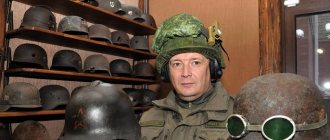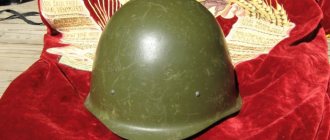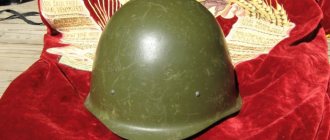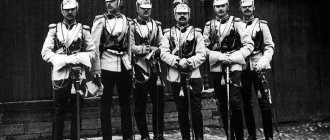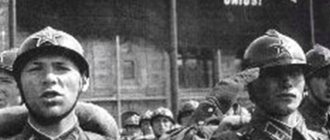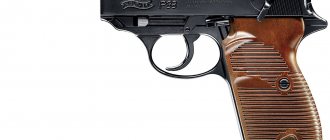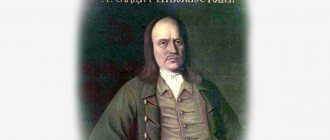Army protective helmets (ZH) are a reminder of the era of knights. They remained an almost unchanged part of the combat armor. If the cuirass was transformed into a bulletproof vest, which does not at all resemble the combat military armor of a knight, then iron helmets were produced until recently.
Although there was a time in military history when soldiers wore headgear instead of protective helmets, eventually necessity forced the military authorities to return this part of the armor to service.
The appearance of combat helmets in France
Until the outbreak of the First World War, soldiers of European countries did without protective helmets. The army abandoned armor long ago, so a helmet protecting the head was considered an element of ancient armor that had no place in the modern army. However, the First World War, which was unofficially called the “trench war,” showed that abandoning soldiers’ helmets was a rash decision.
Since it was necessary to stick out of the trenches, the soldiers’ heads were the first to feel how bad they felt without reliable protection. Most soldier deaths occurred from hits to the head. Seeing the monstrous losses of personnel that occur in war every day, the generals of European countries became seriously worried.
The first special-purpose helmets were developed in France. Before their appearance, French soldiers wore cloth caps, which could only protect their heads from bad weather. The first French helmet was called “Adriana” and began to be mass-produced already in 1915. It was not one-piece and consisted of the following parts:
- Cap;
- Comb;
- Skirts.
Immediately after the appearance of helmets, the losses of the French army decreased significantly. For example, the total number of wounded decreased by 30%, and those killed by 12-13%. It is worth considering the important fact that the French helmet was not intended to protect against bullets. He, of course, could ricochet a bullet that hit him along a lateral trajectory, but he could not withstand a direct hit. But shrapnel and fragments from grenades did not penetrate it.
Seeing the unexpected success in “reanimating” such a seemingly outdated element of protection as a helmet, the allied countries hastened to purchase huge quantities of “Adrian” for their armies. The following countries have purchased such protection:
- Russia;
- Romania;
- Italy;
- Portugal;
- Great Britain.
All of the above countries, except England, were very pleased with the protective properties of French helmets.
A few words about efficiency or whether a soldier needs a helmet
Since World War I, troops on the battlefield have suffered more losses from enemy artillery fire than from enemy small arms fire. Statistics say that 70-80% of the total number of personnel injuries are from shrapnel, and only 20-30% from bullets. Therefore, the main task of a helmet - as well as a bulletproof vest, for that matter - is to protect the soldier from the effects of shrapnel.
The most important characteristic of any helmet is the level of its anti-fragmentation resistance (PSR). For example, for a steel helmet V50% = 300-350 m/s for a fragment weighing 1 g, which means a 50% probability of not penetrating the cone body. A significant increase in durability can be achieved by increasing the thickness of the helmet, but this immediately leads to a heavier helmet. The polymer materials from which modern helmets are made have a tensile strength comparable to high-strength steel, but at the same time they are much lighter. In addition, polymers are much better at absorbing and dissipating impact energy than metals.
A helmet does not provide absolute protection in battle; it only increases a fighter’s chances of survival. And it increases quite seriously. Even during WWII, the British calculated that the massive use of helmets reduces the number of killed by 12% and the number of wounded by 28%. The overall percentage of head wounds is significantly reduced. The French also studied this issue and obtained similar results.
Is it possible to make a helmet that would protect not only from shrapnel, but also from bullets? It’s probably possible, but does it make sense? Most likely, such a helmet will weigh 7-8 kg, which will make its use, to put it mildly, problematic. Such experiments were already carried out during WWI and they ended in failure: the helmet could withstand a powerful rifle bullet, but the soldier’s neck could not.
English soldier helmets
The British military leadership, which purchased a large batch of French helmets, remained very dissatisfied with their protective qualities. A commission was created to develop their own helmet, which would be better than the French counterpart. It is possible that this decision was made because of the pride of the British military aristocracy, which considered it shameful to use helmets invented by the “frogmen” in war.
After reviewing several options, the British military command chose the design of John Brodie, who presented his own model of a helmet, very much reminiscent of the medieval English Capellin iron hat. English soldiers fought in such helmets in the 11th-16th centuries. After minor modifications, the helmet was adopted by the British army under the name "Helmet Steel Mk1".
Unlike the French model, the English helmet was one-piece and had wide edges along the entire perimeter. It was perfect for protection in a trench, as the wide fields protected against shrapnel and shrapnel from above. But every attack in it was very risky, because the helmet did not protect the back of the head, temples and ears at all. Since the British troops did not go on the attack too often, this helmet was not only liked by the British military, but was also adopted by several countries very friendly to Great Britain. These were:
- USA;
- Canada;
- Australia.
It is clear that these 3 countries, due to the fact that they practically did not participate in hostilities, had helmets only for “order.”
How did the concept of “helmet” come about?
A special piece of clothing designed to protect a warrior’s head during battle was originally called a helmet. Since it was a continuation of the armor and was also made of iron, the military command included it in the standard combat kit under the official name “steel helmet” and recognized it as an effective means of individual protection for a fighter.
With the advent of various types of troops and the improvement of military craft, helmets began to be modernized. The products were dome-shaped. Steel was used to make them. But history knows examples made of felt and leather, the protective properties of which were ensured by a large number of metal elements attached to them. Due to the presence of these steel parts, the headdress was associated with iron. Over time, a more convenient word “casque” appeared in everyday life, which in Latin means “metal helmet.”
Military helmets in Germany
When Germany's opponents had been using head protection for over a year, German soldiers continued to make do without it. Only in 1916 did the first German helmets appear, which were quite different from what the representatives of the Entente bloc wore. Most likely, the Germans were simply not satisfied with the design of the French and English helmets because they could not withstand a frontal bullet hit.
In early 1916, Germany developed its own helmet called the M-16 "Stahihelm", which was significantly different from the enemy's protection. Specific “horns” located on the sides made the appearance of the new military helmet easily recognizable. They not only covered the ventilation holes, but also served as an element for fastening the armored shield that covered the frontal part. Such armor made it almost impossible for a helmet to be penetrated by a rifle or machine-gun bullet.
However, as it turned out, it was better to avoid a direct hit to the forehead. The helmet perfectly withstood even a machine-gun bullet, but the soldiers’ necks turned out to be absolutely unprepared for such tests of strength. Cervical vertebrae were injured or even broken, which in some cases led to death.
Among the soldiers there was an interesting technique that made it possible to keep the neck intact in the event of a frontal bullet hit. To do this, the strap on the helmet was not fastened, and it simply flew off the soldier’s head. As a result of such a trick, many managed to survive after receiving a bullet in the head.
Further attempts to create a more durable helmet were also unsuccessful, because increasing the thickness of the armor gave the helmet extra weight, and the neck still broke.
Background
Historians believe that people began to use protective helmets soon after the appearance of the first weapons, that is, back in the Stone Age. At first they were made from wood, bone, leather... Then man tamed metals and began to make metal helmets. Modifying and improving from era to era, the helmet was present on the battlefield until modern times, but with the spread of firearms, helmets, as well as armor in general, lost their importance. In their place came hats, shakos, caps and other types of headdresses that protected the soldier from the sun and rain, and were part of his uniform.
The military also used helmets, but they were just another element of the dress uniform. These helmets were made of leather, richly decorated, and those serving in such headdresses looked brave and dashing. But such helmets, of course, could not protect the head.
For the longest time, metal protective helmets were used by cuirassiers and dragoons, but they were eventually abandoned there too. Many European countries that had colonies in southern latitudes supplied their armies with pith helmets, but this was protection from the sun, and not from a bullet or saber strike.
What kind of helmets were there in the USSR after the revolution?
If you look at chronicles or old photographs of the first years after the emergence of Soviet Russia, you can see that the main headdress of the Red Army soldier was the Budenovka hat. A small number of metal helmets were preserved in military warehouses, which the Soviet Republic “inherited” from the tsarist government, but most often they flashed at various military reviews and parades.
The first Soviet iron helmet was created in 1929. Outwardly, it resembled the famous M-17 “Sohlberg”, which was produced in Tsarist Russia. A pilot batch of experimental helmets, called M-29, was produced. Due to the fact that the production process was very labor-intensive and expensive, this model was never mass-produced.
The political situation in Europe in the 30s of the 20th century showed the USSR that soldiers needed a massive metal helmet. This is how the first mass-produced Soviet helmet, SSh-36, came into being. The soldiers in them went through many military conflicts:
- Polish campaign;
- Khalkhin Gol;
- Finnish War;
- Spanish Civil War;
- Battles on Lake Khasan.
This helmet was created on the basis of the German M-16 “Stahihelm” helmet, but was significantly inferior to it in terms of tactical and technical characteristics. The helmet turned out to be too heavy, its weight reached 1.3 kg. At the same time, the thickness of the helmet metal, equal to 1.1 mm, was insufficient to protect against bullets and large fragments. The shape of the helmet, which had a wide brim, interfered with visibility, and the wind could sometimes simply blow such a helmet off a fighter’s head.
It was soon replaced by a new model, which was named SSh-39 (SSh-40 since 1940). This helmet is a real legend, since it was in them that the soldiers of the USSR were able to defeat fascism. The new army helmet had the following advantages:
- It was made of alloy armor steel;
- The wall thickness was 1.9 mm;
- Moreover, the weight was even slightly less than that of the SSh-36 and amounted to 1.25 kg;
- The helmet withstood a frontal shot from a revolver at a distance of 10 meters.
In 1940, SSh-39 was modernized. The sub-hull system was replaced, after which the helmet was renamed SSh-40. It is under this name that she is known all over the world. Even now, these protection options have not been removed from service and are stored in large quantities in Russian military warehouses.
Subsequently, the SSh-40 helmet was modernized several times. These modifications took place in 1954 and 1960. In both cases, the modernization consisted of replacing the sub-tool device with a more advanced one, but in essence, all these modifications were a slightly modified model of the SSh-39.
Construction of helmets
Wartime helmets have always been a subject for research by historians and archaeologists, who have thoroughly studied all the structural features and forms of soldier’s personal protective equipment, which have been widely used for thousands of years. Scientific research suggests that the main part of the protective helmet design has remained unchanged for many centuries. The changes affected only the form. It depended on the development of weapons and destructive weapons, from which it was obliged to protect.
Metal was used as a material for making helmets. These were thin sheets of bronze or copper, which were eventually replaced by steel or iron. It was helmets made of iron sheets that were used by all armies of the world until the 80s of the twentieth century. Later, military helmets and helmets began to be made from modern materials such as titanium, Kevlar, fabric polymers, and a compound of titanium and aluminum.
The internal structure of the helmet is represented by a special leather part, fastened with rivets around the circumference in the lower inner part of the product. This part of the helmet is called the “tuleyka”. It branches out using slits into several petals connected by a cord. The main functions performed by the crown and petals:
- ensuring a balanced fit of the helmet on the head;
- preventing head contact with the metal sheet of the helmet;
- softening the impact of fragments and stones on the outer part of the helmet.
Modern military helmets are more comfortable and safe for a soldier, since the petals contain additional foam or leather pads attached to them, enhancing the softness.
Serious modernization of the Soviet helmet in 1968
Serious modernization of the SSh-39(40) occurred only in 1968. The new helmet was indeed thoroughly redesigned, and did not become another modernization of the SSh-39. The differences between the new model were the following nuances:
- The metal was replaced with a more durable armor alloy;
- The slope of the front wall has been increased;
- The sides have been shortened.
Currently, the SSh-68 is the main Russian protective helmet. In addition, protection of the same design is used by the armies of the CIS, China, India, Vietnam, North Korea and a number of other countries.
Although the SSh-68 does not quite correspond to the level of modern military helmets, the huge number of them in warehouses forces modernization to be made on its basis. This is how the following, more modern models appeared:
- SSh-68M;
- SSH-68N.
These modernizations received reinforcement of the structure from the inside with aramid and modern under-body devices. As a result, the weight of the new upgrades increased to 2 kg, but their strength increased significantly.
Modern models of Russian military helmets
Since there are currently much more SSh-68 helmets than is required by the Russian army, their production has been discontinued. Now the Russian military industry is mastering the production of new models of helmets, which are made of new and modern materials on a fabric-polymer basis. New models of helmets are much lighter and more comfortable than their steel counterparts, and most importantly, their protective properties exceed those of steel helmets.
The first helmet that was produced in Russia using modern materials is called 6B7. It entered service with the Russian army back in 2000. Russian special forces, airborne troops, marines and other similar units received similar protection.
In 2006, using the 6B7 helmet as a base, the Steel Research Institute produced a new helmet for Russian special forces - 6B27, which in its protective characteristics surpasses most foreign analogues.
Currently, designers at the Steel Research Institute are working on improvements to the unique Ratnik-BSh helmet, which has no analogues in the world.
General-arms aramid-composite armored helmet 6B7-1M of the Russian Armed Forces
General-arms aramid-composite armored helmet 6B7-1M of the Russian Armed Forces
The general-arms protective aramid-composite reinforced helmet “6B7-1M” is intended for use in a set of combat equipment as a means of individual armor protection for military personnel of the Russian Ground Forces and
Airborne Forces during all types of combat operations. Main characteristics The helmet provides a level of head protection from V50 fragments of at least 630 m/s and from bullets from PM pistols from 5 meters and TT from 50 meters. The helmet protection area is at least 11.5 dm2. The weight of the helmet is no more than 1.15 kg. Features • consists of a body and a sub-body device • the protective structure of the body is made up of discrete fabric material based on aramid threads • retains protective properties at temperatures from -50°C to +50°C • allows driving vehicles • allows decontamination, degassing and reduces the protective and operational characteristics after exposure • does not interfere with the perception of environmental sounds • has repairability, allowing repairs to be carried out in the field without the use of special devices • has a design that does not require special equipment or accessories to ensure maintenance and repair • non-penetration of secondary fragments inside the helmet if not penetrated • a belt of continuous wear for at least 24 hours without irritation and abrasions • compatibility with summer and winter uniforms, standard elements of military equipment • convenient and quick putting on and taking off without assistance • reliable fixation on the soldier’s head and does not move when performing various techniques and actions • the ability to land, place in military equipment and other vehicles, as well as the use of individual weapons while in them • performing actions characteristic of a combat situation • compatibility with communications, surveillance, aiming equipment • the ability to attach a camouflage cover and mesh • operation in winter through the use of an insulated balaclava Manufacturer: Closed Joint Stock Company “Center for High-Strength Materials “Reinforced Composites” CJSC TsVM “Armocom”, Russia
New Russian helmet 6B47 “Ratnik”
Although the latest Russian Ratnik equipment is still being tested, one of its elements is already being mass-produced - the 6B47 Ratnik protective helmet. It differs from previous Russian developments in its weight, which is less than 1 kg, and small dimensions. At the same time, this helmet is much stronger than its heavier “brothers”. Such characteristics were achieved through the use of the latest composites for its production.
This helmet has a three-layer protection system. The outer and inner layers are made of hard composites, between which a layer of aramid material is placed. This helmet in its functionality is more reminiscent of a modern pilot's helmet. It is equipped with a communication system and a monitor onto which the image from the optical sight is projected.
Flight helmets
A modern pilot's helmet is not just a device that protects the pilot's head. Most of them are complex devices that are literally packed with electronics. The development of flight helmets occurred very rapidly. The first leather caps with built-in heavy aviator goggles quickly gave way to modern devices.
The most interesting of modern flight helmets is the so-called “big-eyed helmet”, specially designed for pilots of the American F-35 fighter. The cost of this model is about $600,000.
Military helmets, which had been undeservedly forgotten, returned to the world military scene again after the outbreak of the First World War. Currently, the latest military helmets are not just protection for a soldier’s head - they are a real computer, equipped with modern electronics.
World War I
Germany. At the beginning of the First World War, helmets were in service only with the German army, and even then, the Teutonic pickelhelm can hardly be called a helmet in the modern sense of the word. It was a leather helmet with metal trim and a peaked pommel. She, of course, looked stylish, but she could not protect her owner’s head. And the spike and numerous metal parts also gave away the soldier’s location.
Meanwhile, trench warfare required protection of the head, because it was this part of the body that most often turned out to be an accessible target.
The Germans tried to make pickelhelms from metal, but it quickly became clear that such a “device” could not reliably protect the head of its owner. After this, they decided to approach the issue with all German thoroughness: helmets of various shapes and designs were tested at the test site. Technical requirements were drawn up for the new product, which related to the thickness and grade of metal, weight, and design. As a result of these researches, the famous Stahlhelm appeared, which for many decades became a real symbol of the German soldier. Its first model, M16, began to enter the army en masse already in 1916.
In terms of its protective characteristics and convenience, this helmet was significantly superior to the analogues that Germany’s opponents had at that time. The M16 was adopted by the armies of the Ottoman Empire, Austria-Hungary and Bulgaria. Before the end of WWII, the Germans managed to release two more modifications of the Stahlhelm - M17 and M18, in which the shortcomings of the original version were corrected.
I have always been interested in the question of why the Germans need “horns” on their helmets. It turns out that this was not a whim of the designer and not a tribute to the Teutonic knights. “Horns” appeared in the very first Stahlhelm model and were invariably present in its early modifications. They performed two functions: firstly, they covered the ventilation holes, and secondly, they were supposed to serve as a mount for an additional frontal shield, which, according to the designers of the helmet, could withstand hits from a bullet from a rifle or machine gun. And the shield really withstood such a blow, the only problem was that the soldier’s neck could not withstand it - the spine simply broke. So, it was decided to abandon the idea of creating a helmet that could “catch” bullets.
France. The French entered the war without helmets at all. The heads of their soldiers were covered with ordinary caps, which protected them well from bad weather, but could not protect them from shrapnel. France was the fastest to develop a metal protective helmet - the Adrian helmet. It was named after its creator, General Auguste Adrien, and began to enter service with the troops as early as 1915.
Adrian's helmet consisted of three (according to other sources, four) parts and had a characteristic crest and visor. For its manufacture, steel with a thickness of 0.7 mm was used, the total weight of the product was 700-800 g. If the German Stahlhelm was considered the most reliable, then Adrian’s helmet (“Adrianka”) had no equal in cheapness and manufacturability. At the same time, the helmet very reliably protected the soldier from shrapnel, fragments, flying stones, etc. “Adrianka” became the most popular helmet of the First World War. In addition to France itself, this helmet was adopted by Belgium, Greece, Italy, Japan, and then Russia.
England. The British also entered the war without helmets, but by the end of 1915 the Mk.I helmet (Shrapnel helmet) began to arrive in the army. Contrary to popular belief, its distinctive shape was inspired not by a pith helmet, but by the famous medieval chapel. The creator of the Mk.I was Londoner John Brodie. The thickness of the steel of the helmet was 0.9 mm, it was simple, cheap and at the same time did a good job of protecting the soldier’s head from blows from above, that is, when he was in a trench. During the First World War, more than 7.5 million Mk.Is were manufactured. The English helmet was adopted by Canada, the USA and Australia.
Russia. In 1914, the Russian army also did not have helmets. The need for their introduction became obvious already in 1915. However, the issue was slowed down at the highest level - Emperor Nicholas II spoke out against the use of a helmet. The military had a different opinion on this matter, and in the same 1915, the Russian General Staff initiated the development of its own helmet based on Adrian’s helmet. And in the summer, a million of these helmets were ordered in France. In November 1916, the army began to receive its own helmets, which were similar in appearance to the French ones, but had a slightly different design. Then revolutions and unrest began in the state, and helmets were forgotten for a long time.
